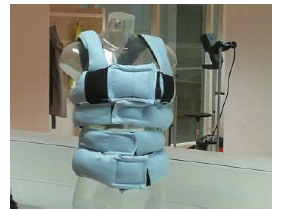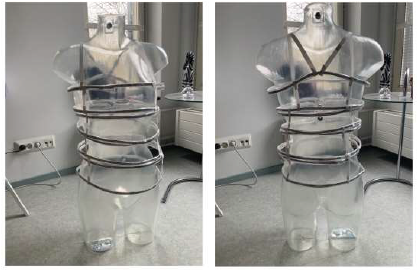This website uses cookies so that we can provide you with the best user experience possible. Cookie information is stored in your browser and performs functions such as recognising you when you return to our website and helping our team to understand which sections of the website you find most interesting and useful.
ATTRACT student projects
Discover the ATTRACT student projects boosting sensing and imaging technologies to enable breakthrough innovations for society
Team
The team members working on this project are the following:
Sini Simpura
Mechanical engineering
Aalto University (Espoo, Finland)
Lingyi Chen
Electronics & nanotechnology
Aalto University (Espoo, Finland)
Eero Suhonen
Mechanical engineering
Aalto University (Espoo, Finland)
Ramo Vepsäläinen
Mechanical engineering
Aalto University (Espoo, Finland)
Zhuoying Ren
Interior architecture
Aalto University (Espoo, Finland)
Nada Bellam
Fashion clothing, textile design & economics
Aalto University (Espoo, Finland)
Aleksandra Kowalczyk
Chemical & process engineering
Warsaw University of Technology (Warsaw, Poland)
Pawel Antkowiak
Chemical & process engineering
Warsaw University of Technology (Warsaw, Poland)
Patryk Miesak
Automatic control & robotics
Warsaw University of Technology (Warsaw, Poland)
Project WPET
is based on ATTRACT project WPET
Background
PET scanning is an effective way to detect cancer. However, right now PET scanning procedures have a high price tag. There are only a few scanners available in each oncological unit and the radiation dose to patients comes with its own health risks. Therefore, PET scanning is not used for preventive searching, but to establish whether a patient diagnosed with cancer has developed metastasis.
We want to expand the use of PET scanning to the early stages of preventive cancer searching. With new microelectronics, it’s possible to make the scanning in smaller scale, so that the device is on the patient for a longer period of time, thus allowing for a decrease in the needed radiation dose. This would enable us to produce scanning devices more cheaply, and make these also available for preventive searching.
Our goal is to make a wearable PET-scanning vest. It would be around 10 kg, and the patient would be able to wear it and do some simple daily activities while wearing it. It has a battery and the vest will track relative motion to the patient’s body, so that it would be known where the detective panels are relative to the body.
In Finland, our team is focusing on the structure, and how to make it as stable, but also as comfortable to wear as possible. We’re also thinking of a possibility to do an aiding device, to take some weight of the vest to help the patient bare the weight.
In Poland, our team members are testing and building electronics for our product. The team is making the electronics with a wetsuit, which is made durable with a tailor, to test a different alternative structure for the wearable PET scanner.
We’re planning to make an app that gets real-time data. The wearable will measure temperature, so that it’s easier to control it. The electronics can measure if there are sudden movements, which would lead to wrong data to the scanning device and the app can take that data away.
Outcome
In order to make the device a wearable, we have been studying how to make it as easy to bare the device weight for the patient as possible. We have simulated how well the weight can be distributed and made sure that the centre of the weight is at the patient's spine. There could also be a possibility to use exoskeleton to bear the weight when the patient is moving.
With sensors that are stuck to the patient's body and to the vest, we’re able to see if the vest is moving relative to the body. This way we can program the data so that it changes the placement of where the scanning data is coming from, and so the results stay accurate.



